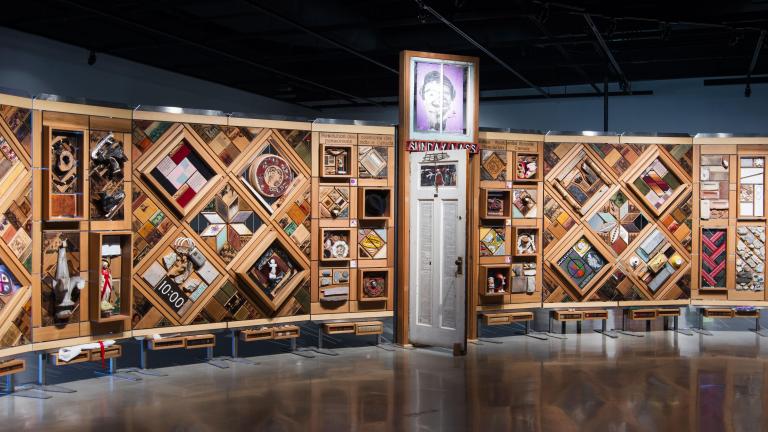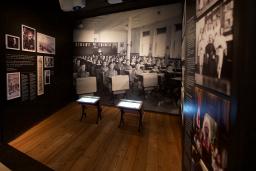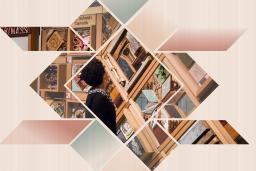The Witness Blanket stands as a national monument to recognize the atrocities of the Indian residential school era, honour the children, and symbolize ongoing reconciliation.
Picking Up the Pieces: The Making of the Witness Blanket
Documentary film
Published: March 20, 2020 Updated: September 18, 2024
Tags:

Photo: CMHR, Jessica Sigurdson
Story text
Inspired by a woven blanket, this large‐scale art installation is made from hundreds of items reclaimed from residential schools, churches, government buildings and traditional and cultural structures across Canada.
The process of gathering these objects and their stories took artist Carey Newman and his team from coast to coast to coast. They travelled over 200,000 kilometres, visited 77 communities, met over 10,000 people, and welcomed over a thousand objects into their care.
Each object has a story to tell, each survivor has something to say. The 90‐minute feature documentary film Picking Up the Pieces: The Making of the Witness Blanket weaves those stories with Carey Newman’s personal journey, examining how art can open our hearts to the pain of truth and the beauty of resilience.
The makers of the documentary have made it freely available online to share the power of storytelling and testimony during a time of fear, uncertainty and social isolation. They invite you to bear witness.
This film shares traumatic stories of Indian residential school survivors. Please watch and share with gentleness. If you or your family members have a history with residential schools, make sure before watching that you can connect with support.
Video: Picking Up the Pieces: The Making of the Witness Blanket
Symbol of protection
The blanket is a universal symbol of protection.
For many of us, it identifies who we are and where we’re from – we wear them in ceremony and give them as gifts.
Blankets protect our young and comfort our elders.
Bearing witness
Watching this documentary allows you to witness the making of this powerful artwork and the survivor stories it bears. Artist Carey Newman says: “In the Salish tradition, we ask people to stand and speak about what they have witnessed.” We ask you to share its stories and your own story of encountering them, and to weave these memories and experiences into your life in living remembrance.
My role as an artist is to bear witness. The pieces themselves are witnesses. The people giving us the pieces are witnesses, and at some level we all are – or we should all be – witnesses.
Conserving the Witness Blanket
Work is now underway at the Museum on the long‐term project of conserving and exhibiting the Witness Blanket. Museum staff recently welcomed experts from the Canadian Conservation Institute (CCI) and some of the builders and installers of the Witness Blanket to evaluate the state of the artwork and artifacts.
This collaborative assessment of the artwork was the first step in determining priorities and approaches that will guide conservators and technicians. The Museum, the CCI and the creators of the Witness Blanket will be working together in the coming months and years of interpersonal, intercultural and technical effort to ensure that the Witness Blanket can continue in its powerful testimonial role for the foreseeable future.
Dive deeper
Canada’s residential schools
In this guide, you will find links to resources related to the residential school system and the stories of children who were taken from their families and sent to residential schools.

The Witness Blanket
This monumental work of art honours Survivors of Canada’s residential schools. A new website lets you learn from their experiences and bear witness to their stories.

Suggested citation
Suggested citation : “Picking Up the Pieces: The Making of the Witness Blanket.” Canadian Museum for Human Rights. Published March 20, 2020. Updated: September 18, 2024. https://humanrights.ca/story/picking-pieces-making-witness-blanket